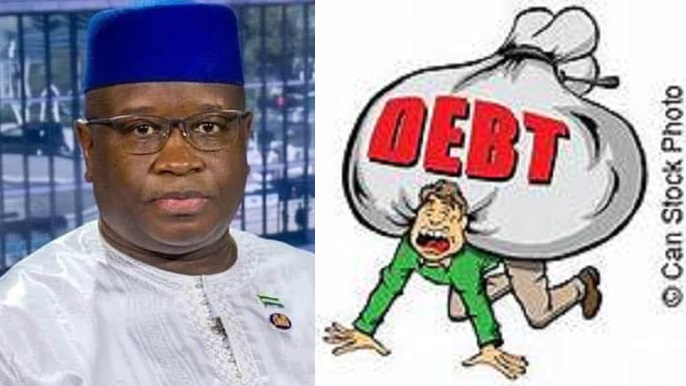Sierra Leone’s domestic debt stock has climbed to NLe18.20 billion as of June 2023, according to the latest statistics from the Public Debt Management Division. This represents a significant increase of NLe2.15 billion and NLe5.01 billion compared to December 2022 and June 2022, respectively.
The 13.38% surge in just six months highlights the dynamic nature of the country’s debt landscape, presenting both challenges and opportunities for financial management.
The report breaks down the domestic debt composition, revealing that Marketable and Non-Marketable Government Treasury Securities make up the majority, with NLe15.57 billion and NLe2.63 billion, respectively. This translates to 85.54% and 14.45% of the total domestic debt, respectively.
Meanwhile, there’s positive news on the external commercial debt front. The Ministry of Finance reported a decrease to US$156.34 million by June 2023, marking a 4.9% reduction from US$164.43 million a year prior.
This is attributed to the government’s policy of systematically amortizing the debt, which primarily consists of principal and interest arrears accumulated over two to three decades. The government has refrained from contracting new commercial debt, contributing to the positive trend.
Meanwhile, the country’s total interest debt service payments are expected to amount to 4.1 billion in 2024 according to Minister of Finance, Ahmed Fantamadi Bangura.
The World Bank has recently raised concerns about Sierra Leone’s economic stability, particularly regarding its escalating risks to debt sustainability. The Sierra Leone Economic Update (SLEU) report, released in November 2023 highlights a surge in the country’s public debt both in absolute terms and as a percentage of its Gross Domestic Product (GDP).
On the other hand, the African Development Bank have advised Sierra Leone and other countries in West Africa to adopt fiscal initiatives that prioritize growth while ensuring debt remains sustainable.



 Post a comment
Post a comment









Comment(s)
Disclaimer: Comments expressed here do not reflect the opinions of Sierraloaded or any employee thereof.
Be the first to comment